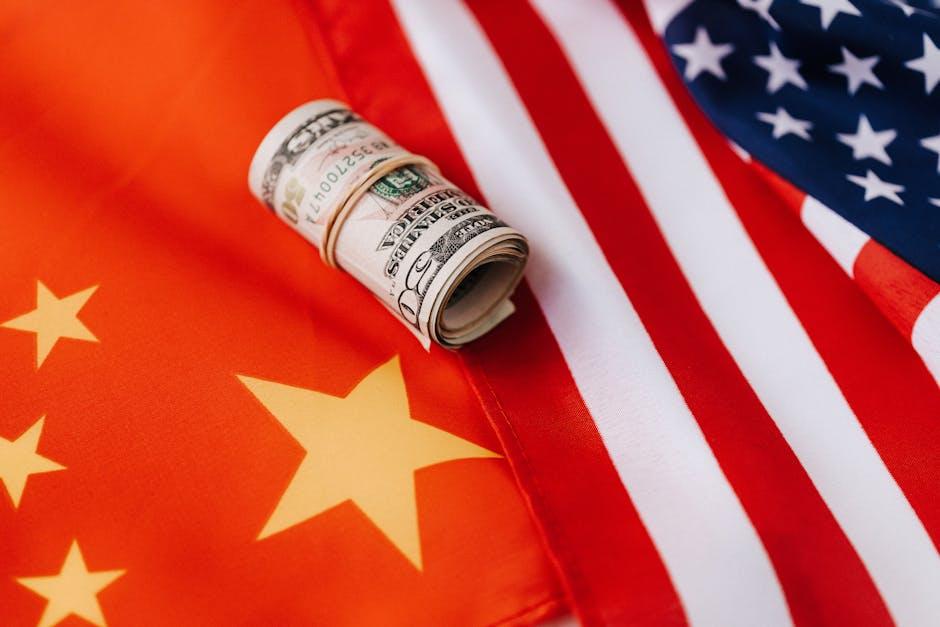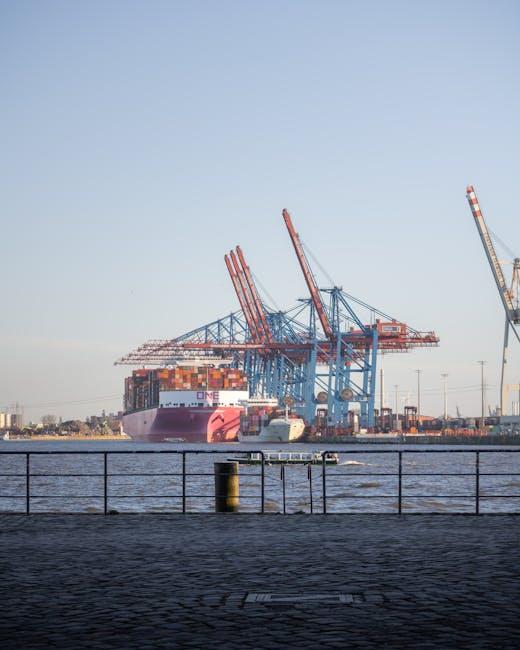In the intricate web of global commerce, trade wars have emerged as both catalysts and chaos-makers, sending ripples through economies far beyond their points of origin. What begins as a clash over tariffs, regulations, or market access often spirals into a complex dance of retaliation and realignment, reshaping international relationships and economic landscapes. This article delves into the multifaceted impacts of these trade conflicts, unraveling how the tremors of protectionism echo across markets, industries, and everyday lives worldwide. By unpacking the layers of consequence, we aim to illuminate the subtle yet profound ways trade wars redefine the global economic order.
Table of Contents
- The Escalation of Trade Conflicts and Their Immediate Global Impact
- Shifts in Supply Chains and Emerging Market Vulnerabilities
- Monetary Policies and Inflation Trends Amid Trade Tensions
- Strategic Approaches for Mitigating Risks in a Fragmented Economy
- Wrapping Up

The Escalation of Trade Conflicts and Their Immediate Global Impact
As nations impose tariffs and counter-tariffs, the intricate web of global supply chains begins to strain under increased costs and uncertainty. Businesses face disrupted logistics, forcing many to pivot from established routes and suppliers. The immediate fallout is evident in fluctuating commodity prices and tightening market liquidity, creating a ripple effect that transcends borders. Investors react swiftly, shifting capital toward safer assets, which impacts currency valuations and trade balances worldwide.
Key immediate consequences include:
- Spike in production costs due to tariffs on raw materials
- Volatility in import-export markets retarding growth
- Industries recalibrating supply chains, sometimes accelerating automation
- Heightening geopolitical tensions as trade acts become tools of diplomacy
| Affected Sector | Immediate Impact | Example |
|---|---|---|
| Manufacturing | Increased material costs, supply delays | Automotive parts tariff spikes |
| Agriculture | Export demand slump, price drops | Soybean export declines |
| Technology | Component shortages, elevated costs | Chip import restrictions |

Shifts in Supply Chains and Emerging Market Vulnerabilities
Global trade disruptions have acted as a catalyst for widespread shifts in how supply chains are structured and managed. Companies are increasingly prioritizing resilience over efficiency, rethinking long-standing dependencies on single regions for critical components. This strategic pivot means a growing emphasis on diversified sourcing, with manufacturers spreading risk across multiple countries rather than relying heavily on traditional hubs. Emerging markets, once seen as attractive for their low labor costs and favorable trade conditions, now face mounting challenges as supply chain realignments expose vulnerabilities in infrastructure and regulatory frameworks. These shifts highlight the complex interplay between geopolitical tension and economic opportunity, underscoring the fragility of interconnected markets.
Key vulnerabilities emerging in market dynamics include:
- Increased exposure to supply chain bottlenecks due to infrastructure limitations.
- Heightened risk from fluctuating trade policies and tariffs impacting manufacturing costs.
- Struggles in adapting workforce skills to meet evolving industrial demands.
- Financial instability triggered by sudden shifts in foreign investment flows.
| Region | Supply Chain Risk Level | Primary Challenge |
|---|---|---|
| Southeast Asia | Medium-High | Logistic congestion |
| Latin America | Medium | Regulatory changes |
| Sub-Saharan Africa | High | Infrastructure deficits |
| Eastern Europe | Low-Medium | Political uncertainty |

Monetary Policies and Inflation Trends Amid Trade Tensions
Central banks across the globe have adopted a variety of monetary strategies in response to escalating trade tensions, directly influencing inflation trends. To counteract supply chain disruptions and rising import costs, many have adjusted interest rates with the dual aim of stabilizing markets and mitigating inflationary pressures. However, these policies have had mixed outcomes, often reflecting the delicate balance between fostering economic growth and controlling price surges. Key approaches include:
- Targeted rate adjustments: Incremental hikes to temper demand without tipping economies into recession.
- Quantitative easing: Infusions of liquidity to maintain market confidence despite trade-related uncertainties.
- Forward guidance: Clear communication to anchor inflation expectations amid fluctuating trade dynamics.
These interventions tie directly into observable shifts in inflation metrics, which vary depending on the severity and nature of trade barriers enacted. The following table illustrates the inflation rate variations in select economies before and after trade escalations, highlighting the nuanced outcomes of monetary policies keystones in this global chess game:
| Country | Inflation Rate Pre-Tension (%) | Inflation Rate Post-Tension (%) | Monetary Policy Response |
|---|---|---|---|
| United States | 2.1 | 3.4 | Gradual rate hikes |
| China | 1.5 | 2.7 | Targeted liquidity support |
| Germany | 1.7 | 2.9 | Forward guidance emphasis |

Strategic Approaches for Mitigating Risks in a Fragmented Economy
In an increasingly fragmented global economy, businesses and policymakers must adopt multifaceted strategies to navigate uncertainty. Diversification emerges as a cornerstone, where companies spread their supply chains across multiple regions to reduce exposure to localized disruptions. Embracing digital transformation can further empower firms to anticipate risks through enhanced data analytics and real-time market insights. Moreover, fostering resilient partnerships grounded in trust with international stakeholders ensures flexibility and rapid response when trade regulations shift unexpectedly.
Building economic buffers is equally essential. Governments and corporations alike should strengthen financial safeguards such as contingency funds and adaptable credit lines. Below is a snapshot of key strategic initiatives that can better equip entities within a splintered global market:
| Strategy | Benefit | Implementation |
|---|---|---|
| Diversified Supply Chains | Reduced reliance on single markets | Identify multiple suppliers across different continents |
| Digital Risk Analytics | Early detection of trade policy shifts | Deploy AI-driven monitoring tools |
| Financial Contingency Planning | Improved liquidity in crises | Establish emergency funds and credit reserves |
| Collaborative Alliances | Enhanced negotiation strength | Cultivate partnerships with regional trade blocs |
Wrapping Up
As the dust from trade wars slowly settles, the global economy emerges forever altered—its interwoven threads stretched, strained, yet resilient. The ripple effects remind us that in an era of interconnected markets, no nation sails alone; each tariff and countermeasure sends waves across distant shores, reshaping industries, livelihoods, and alliances. While the full legacy of these conflicts remains unwritten, one truth stands clear: navigating the complex currents of international trade demands not only strategy but a shared commitment to cooperation, lest the ripples swell into tides that no economy can withstand. In this unfinished story, the world watches and waits, poised at the crossroads between discord and dialogue.



